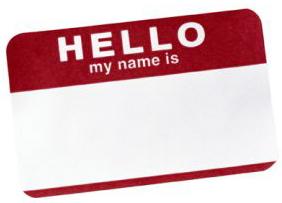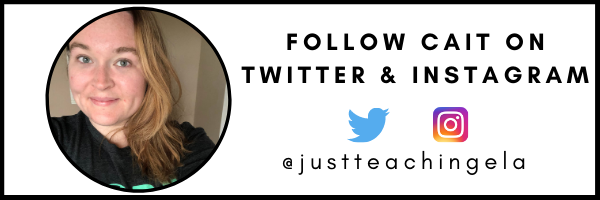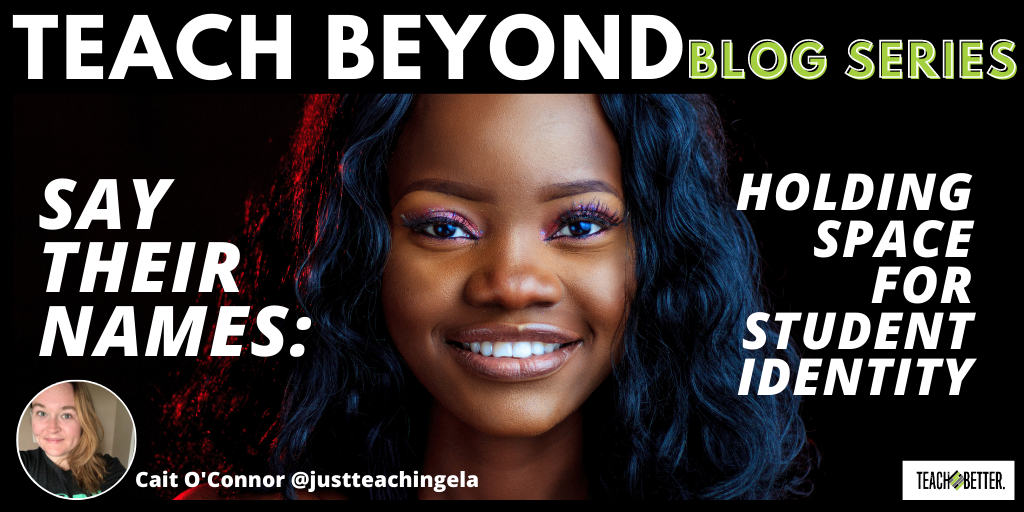TL;DR:
- Names should be celebrated and said correctly by teachers as a means of retaining student dignity and identity.
- Students don’t need nicknames; they need our effort and allyship.
My parents named me Caitlin, which was also the most popular feminine given name of my birth year. My mom always made sure to point out that she spelled it the Irish way. As I got older, I researched the meaning, the origin, and the spelling, and found out that it was in fact the Irish way. Gaelic alphabet does not contain a ‘k’ or a ‘y’, which are common letters with which to spell my name and its variations.

Our names are more than just combinations of letters, loose translations of languages we do or do not speak. Names are chosen for us or by us, and they reflect a culture, an experience, and a personality all at once.
For some, names are a celebration. For others, names carry a heaviness. Names are as living and breathing as the people who own them.
At the beginning of the school year, I asked students about their names. They could tell me about what their name meant, what language it came from, or a nickname they went by or were called by friends and family. We discussed the meaning of our names and whether or not we thought their meanings fit our personalities. We talked about how people got their last names, and how that reflected their history.
Our names are more than just combinations of letters, loose translations of languages we do or do not speak. Names are chosen for us or by us, and they reflect a culture, an experience, and a personality all at once. Click To Tweet“The guy who…” and “The one with the…”
As we move through the year, we are studying Black Panther in 9th grade. In the film, nearly every character has a name rooted in African culture or language; T’Challa, M’Baku, Wakabi, Okoye, Nakia, N’Jobu and Shuri, to name a few. As we study these characters and their position in the story, I make it a point to say these names, and have students pronounce them and say them out loud.
I do this not just to help students with character identification, but to model the act of saying and honoring things that exist outside our own cultures. I want students to make the effort of acknowledgment, rather than just describing the characters who bear these names as “the guy who…” or “the one with the…”. It is important that I help students practice centering and acknowledging people, cultures, identities, names, and letter combinations that they don’t see, hear, or say as part of their own experience.
This matters because too often, students with either first or last names that are indicative of their culture have those names shortened, ignored, or mispronounced and shrugged off in favor of white comfort. Our classrooms cannot be spaces where Xiomara becomes Mara, Chao Xing becomes Candace and Rigoberto becomes Rigo solely for our own Western convenience.
Student Identity: The Death of Names
This usually comes in the form of “I’m so sorry if I butcher it,” or “I’ll just call you this instead” and so on. These kinds of behaviors are the murdering of names and the slow, burning death of student identity across cultures.
Actress Uzo Aduba speaks about her experience in school after moving to America. Ijeoma Oluo, in her book So You Want to Talk About Race, addresses this beautifully in an entire chapter. And still, people center their own lack of effort when saying names like theirs. Phrases like the ones I mentioned ultimately center whiteness, allowing the speaker to get away with not knowing, with colonizing the very essence of identity that comes spring-loaded into a name. This not knowing is an act of violence against our students’ psychologies, against their bodies and selves—violence that kills their culture, their spirit, the essence of the very thing that opens the door to where they are from.
So what happens to students after a repeat death of their names?
Aduba talks about this in her short video. Students learn to say “it’s fine” to teachers who center their misunderstanding rather than see the students for their uniqueness and identity. It becomes something that students learn to expect, that they feel the need to jump in front of from day one.
In doing so, students learn that their identities and their cultures do not matter. When name-butchering and nicknaming repeats itself over time, students also learn that those around them—teachers, classmates, the world—are committed to misunderstanding them. They come to understand that they should just make it easier for everyone else around them to acknowledge that they exist.
[scroll down to keep reading]
Student Identity: Teaching Beyond
Moving beyond a lack of effort and into a commitment to really see and speak your students into existence is everything. If you don’t want to ask the student how to pronounce their name, find someone who shares their culture, and ask them for help. Last year, I taught a large population of students from the Dominican Republic, with names I’d never seen or heard before. But I wanted to get it right.
Names and words often come even more alive when we hear them; for years, I’d even been saying names like Joel Osteen wrong because I’d only seen it at the bookstore and never heard it aloud. I did not want to make this mistake for my students, so I asked a colleague if she’d be willing to send me recordings of their first names. I practiced in the days before school.
“That’s the first time I’ve ever heard my name said like that in school since I came to the U.S.,” one student said, smiling.
We cannot give students nicknames to make ourselves more comfortable and less aware of the world. In doing so, we shrink our students down, and along with them, their capacity and willingness to share who they are with us, their community, and the world. Uzoamaka Aduba says, “Do not ever erase those identifiers that are held in you whether it’s your gap, whether it’s your name, whether it’s your food. It is yours and it was given to you at birth and it is yours to own.”
About Cait O’Connor
Cait O’Connor is a fourth-year public school English/ESOL educator in New York, committed to social justice and equity in education and beyond.



